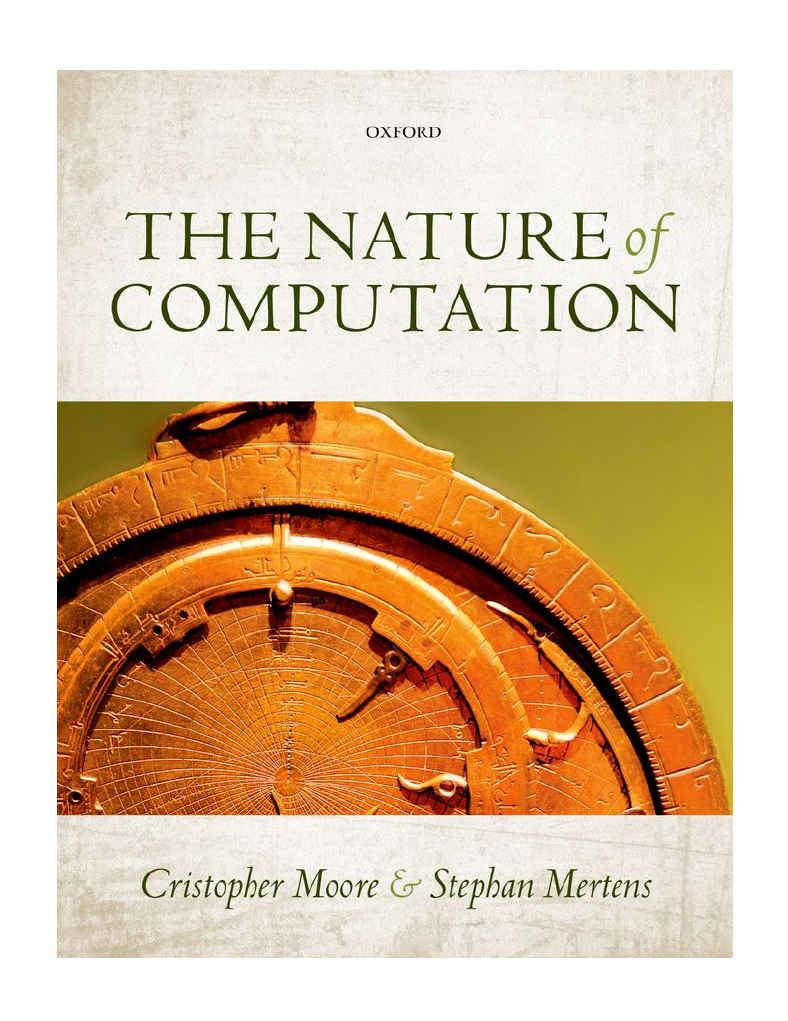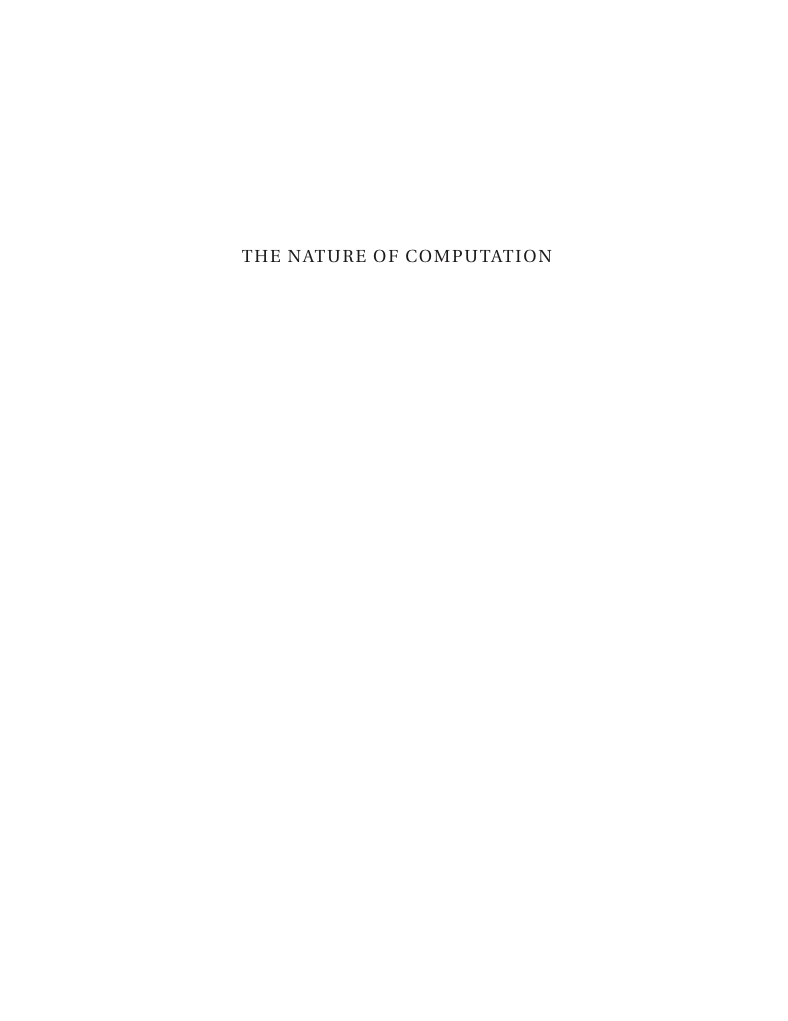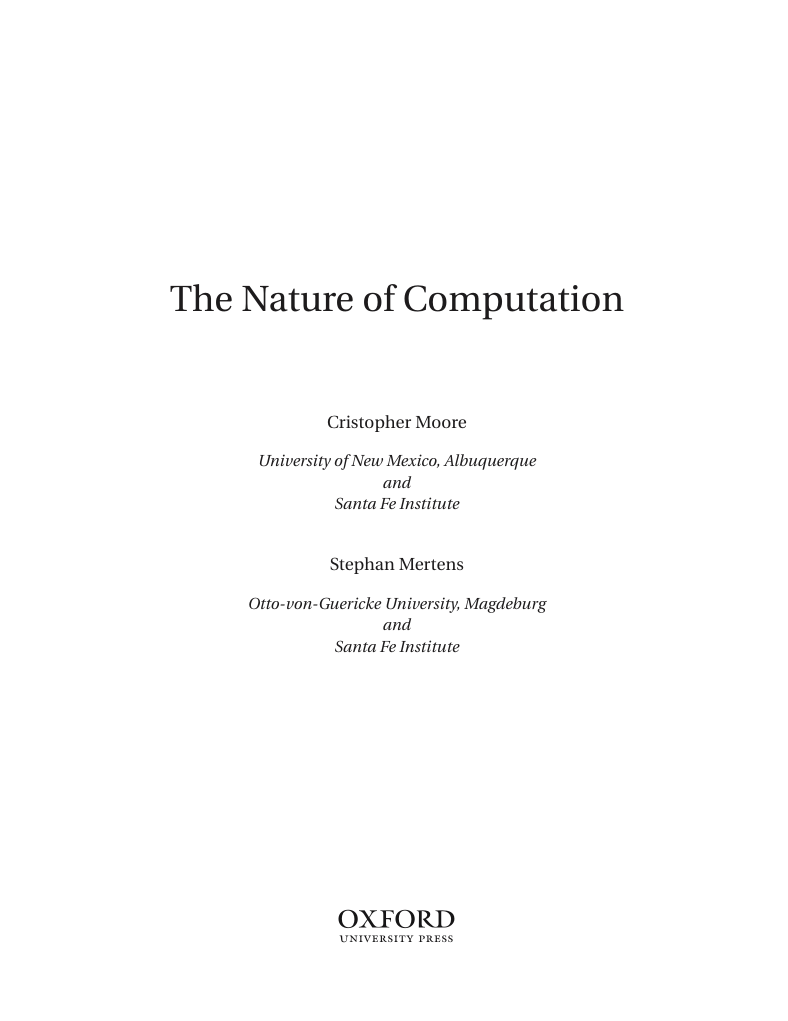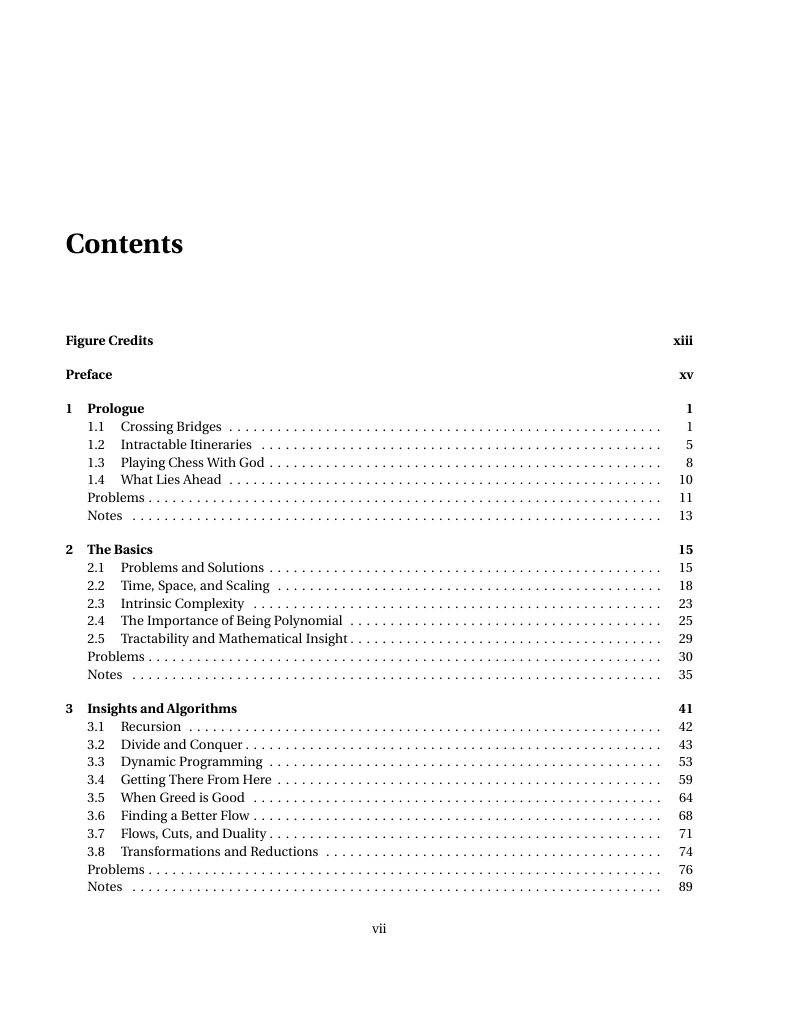Cover
Contents
Figure Credits
Preface
1 Prologue
1.1 Crossing Bridges
1.2 Intractable Itineraries
1.3 Playing Chess With God
1.4 What Lies Ahead
Problems
Notes
2 The Basics
2.1 Problems and Solutions
2.2 Time, Space, and Scaling
2.3 Intrinsic Complexity
2.4 The Importance of Being Polynomial
2.5 Tractability and Mathematical Insight
Problems
Notes
3 Insights and Algorithms
3.1 Recursion
3.2 Divide and Conquer
3.3 Dynamic Programming
3.4 Getting There From Here
3.5 When Greed is Good
3.6 Finding a Better Flow
3.7 Flows, Cuts, and Duality
3.8 Transformations and Reductions
Problems
Notes
4 Needles in a Haystack: the Class NP
4.1 Needles and Haystacks
4.2 A Tour of NP
4.3 Search, Existence, and Nondeterminism
4.4 Knots and Primes
Problems
Notes
5 Who is the Hardest One of All? NP-Completeness
5.1 When One Problem Captures Them All
5.2 Circuits and Formulas
5.3 Designing Reductions
5.4 Completeness as a Surprise
5.5 The Boundary Between Easy and Hard
5.6 Finally, Hamiltonian Path
Problems
Notes
6 The Deep Question: P vs. NP
6.1 What if P = NP?
6.2 Upper Bounds are Easy, Lower Bounds Are Hard
6.3 Diagonalization and the Time Hierarchy
6.4 Possible Worlds
6.5 Natural Proofs
6.6 Problems in the Gap
6.7 Nonconstructive Proofs
6.8 The Road Ahead
Problems
Notes
7 The Grand Unified Theory of Computation
7.1 Babbage's Vision and Hilbert's Dream
7.2 Universality and Undecidability
7.3 Building Blocks: Recursive Functions
7.4 Form is Function: the λ-Calculus
7.5 Turing's Applied Philosophy
7.6 Computation Everywhere
Problems
Notes
8 Memory, Paths, and Games
8.1 Welcome to the State Space
8.2 Show Me The Way
8.3 L and NL-Completeness
8.4 Middle-First Search and Nondeterministic Space
8.5 You Can't Get There From Here
8.6 PSPACE, Games, and Quantified SAT
8.7 Games People Play
8.8 Symmetric Space
Problems
Notes
9 Optimization and Approximation
9.1 Three Flavors of Optimization
9.2 Approximations
9.3 Inapproximability
9.4 Jewels and Facets: Linear Programming
9.5 Through the Looking-Glass: Duality
9.6 Solving by Balloon: Interior Point Methods
9.7 Hunting with Eggshells
9.8 Algorithmic Cubism
9.9 Trees, Tours, and Polytopes
9.10 Solving Hard Problems in Practice
Problems
Notes
10 Randomized Algorithms
10.1 Foiling the Adversary
10.2 The Smallest Cut
10.3 The Satisfied Drunkard: WalkSAT
10.4 Solving in Heaven, Projecting to Earth
10.5 Games Against the Adversary
10.6 Fingerprints, Hash Functions, and Uniqueness
10.7 The Roots of Identity
10.8 Primality
10.9 Randomized Complexity Classes
Problems
Notes
11 Interaction and Pseudorandomness
11.1 The Tale of Arthur and Merlin
11.2 The Fable of the Chess Master
11.3 Probabilistically Checkable Proofs
11.4 Pseudorandom Generators and Derandomization
Problems
Notes
12 Random Walks and Rapid Mixing
12.1 A Random Walk in Physics
12.2 The Approach to Equilibrium
12.3 Equilibrium Indicators
12.4 Coupling
12.5 Coloring a Graph, Randomly
12.6 Burying Ancient History: Coupling from the Past
12.7 The Spectral Gap
12.8 Flows of Probability: Conductance
12.9 Expanders
12.10 Mixing in Time and Space
Problems
Notes
13 Counting, Sampling, and Statistical Physics
13.1 Spanning Trees and the Determinant
13.2 Perfect Matchings and the Permanent
13.3 The Complexity of Counting
13.4 From Counting to Sampling, and Back
13.5 Random Matchings and Approximating the Permanent
13.6 Planar Graphs and Asymptotics on Lattices
13.7 Solving the Ising Model
Problems
Notes
14 When Formulas Freeze: Phase Transitions in Computation
14.1 Experiments and Conjectures
14.2 Random Graphs, Giant Components, and Cores
14.3 Equations of Motion: Algorithmic Lower Bounds
14.4 Magic Moments
14.5 The Easiest Hard Problem
14.6 Message Passing
14.7 Survey Propagation and the Geometry of Solutions
14.8 Frozen Variables and Hardness
Problems
Notes
15 Quantum Computation
15.1 Particles, Waves, and Amplitudes
15.2 States and Operators
15.3 Spooky Action at a Distance
15.4 Algorithmic Interference
15.5 Cryptography and Shor's Algorithm
15.6 Graph Isomorphism and the Hidden Subgroup Problem
15.7 Quantum Haystacks: Grover's Algorithm
15.8 Quantum Walks and Scattering
Problems
Notes
Mathematical Tools
A.1 The Story of O
A.2 Approximations and Inequalities
A.3 Chance and Necessity
A.4 Dice and Drunkards
A.5 Concentration Inequalities
A.6 Asymptotic Integrals
A.7 Groups, Rings, and Fields
Problems
References
Index
A
B
C
D
E
F
G
H
I
J
K
L
M
N
O
P
Q
R
S
T
U
V
W
X
Y
Z
















 2023年江西萍乡中考道德与法治真题及答案.doc
2023年江西萍乡中考道德与法治真题及答案.doc 2012年重庆南川中考生物真题及答案.doc
2012年重庆南川中考生物真题及答案.doc 2013年江西师范大学地理学综合及文艺理论基础考研真题.doc
2013年江西师范大学地理学综合及文艺理论基础考研真题.doc 2020年四川甘孜小升初语文真题及答案I卷.doc
2020年四川甘孜小升初语文真题及答案I卷.doc 2020年注册岩土工程师专业基础考试真题及答案.doc
2020年注册岩土工程师专业基础考试真题及答案.doc 2023-2024学年福建省厦门市九年级上学期数学月考试题及答案.doc
2023-2024学年福建省厦门市九年级上学期数学月考试题及答案.doc 2021-2022学年辽宁省沈阳市大东区九年级上学期语文期末试题及答案.doc
2021-2022学年辽宁省沈阳市大东区九年级上学期语文期末试题及答案.doc 2022-2023学年北京东城区初三第一学期物理期末试卷及答案.doc
2022-2023学年北京东城区初三第一学期物理期末试卷及答案.doc 2018上半年江西教师资格初中地理学科知识与教学能力真题及答案.doc
2018上半年江西教师资格初中地理学科知识与教学能力真题及答案.doc 2012年河北国家公务员申论考试真题及答案-省级.doc
2012年河北国家公务员申论考试真题及答案-省级.doc 2020-2021学年江苏省扬州市江都区邵樊片九年级上学期数学第一次质量检测试题及答案.doc
2020-2021学年江苏省扬州市江都区邵樊片九年级上学期数学第一次质量检测试题及答案.doc 2022下半年黑龙江教师资格证中学综合素质真题及答案.doc
2022下半年黑龙江教师资格证中学综合素质真题及答案.doc